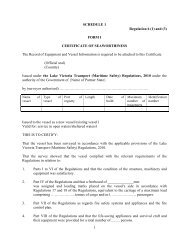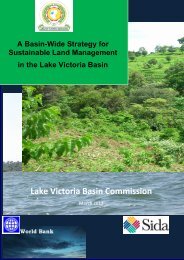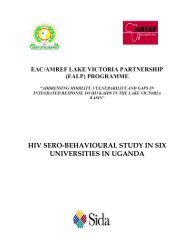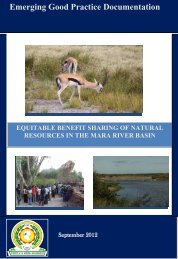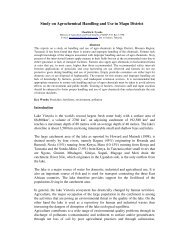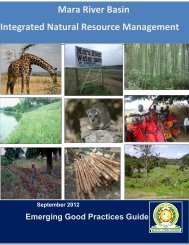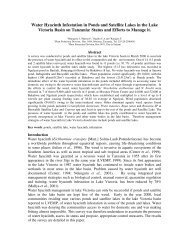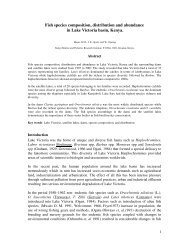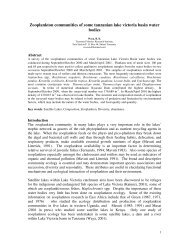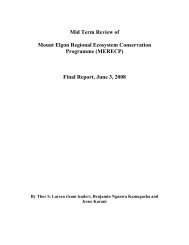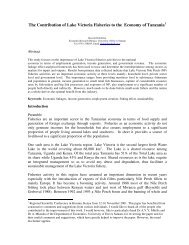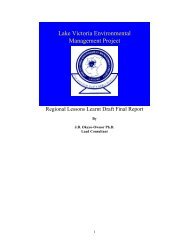Total Economic Value of Maasai Mau, Trans Mara and Eastern Mau ...
Total Economic Value of Maasai Mau, Trans Mara and Eastern Mau ...
Total Economic Value of Maasai Mau, Trans Mara and Eastern Mau ...
You also want an ePaper? Increase the reach of your titles
YUMPU automatically turns print PDFs into web optimized ePapers that Google loves.
l<strong>and</strong> use practices that meet the st<strong>and</strong>ards set by the EQIP plan <strong>of</strong> operations developedin conjunction with the l<strong>and</strong> owners that undertake appropriate conservation practiceor measures needed to address identified natural resource concerns. The practices aresubjected to technical st<strong>and</strong>ards adapted for local conditions. The l<strong>and</strong> owners are paidup to a maximum based on a valuations framework that ensures that fair prices arepaid to participating l<strong>and</strong>owners <strong>and</strong> that avoids excessive or wastage <strong>of</strong> resources.7.4 DisincentivesThe promotion <strong>of</strong> l<strong>and</strong> use practices that conserve ecosystems services in most cases arebacked by strong policy <strong>and</strong> legislative frameworks with strong punitive measures thattend to discourage adoption <strong>of</strong> practices that conserve <strong>and</strong> protect ecosystems. Legalsections usually present a series <strong>of</strong> consultations <strong>and</strong> penalties that will be meted out tol<strong>and</strong>owners who do not conform to specified practices. Such regulations tend toantagonize local people who might otherwise cooperate with conservation efforts. Thus,regulations that impose costs on the local people with minimal benefits may prove to becounterproductive <strong>and</strong> may not attain the intended outputs. Before any conservationscheme is implemented, therefore, the potential impacts <strong>of</strong> such activities on theeconomic bottom lines <strong>of</strong> the local people should be fully evaluated. Recent studieshave shown that most regulations impose high costs on local people withoutcompensating benefits for their participation in forest conservation. The ultimatereactions have been to adopt strategies that minimize such exposure through wellcalculated plans that negate the achievement <strong>of</strong> the desired conservation values.Such experiences indicate that equitable negotiated voluntary schemes may be moreeffective than punitive regulations in winning the support <strong>of</strong> local people inconservation projects. It is expected that modest financial incentives can producesignificant ecological gains at modest cost <strong>and</strong> can motivate local people to participatein ecosystems conservation efforts. It is advisable that less emphasis should be placedon punitive actions that are likely to create perverse incentives that work againsteffective ecosystem conservation <strong>of</strong> forests.Potential Role <strong>of</strong> LVBC Incentives SchemesThese incentives schemes can be piloted in the three forests through voluntaryagreements with KFS or the Narok County Council to determine which conservation69



